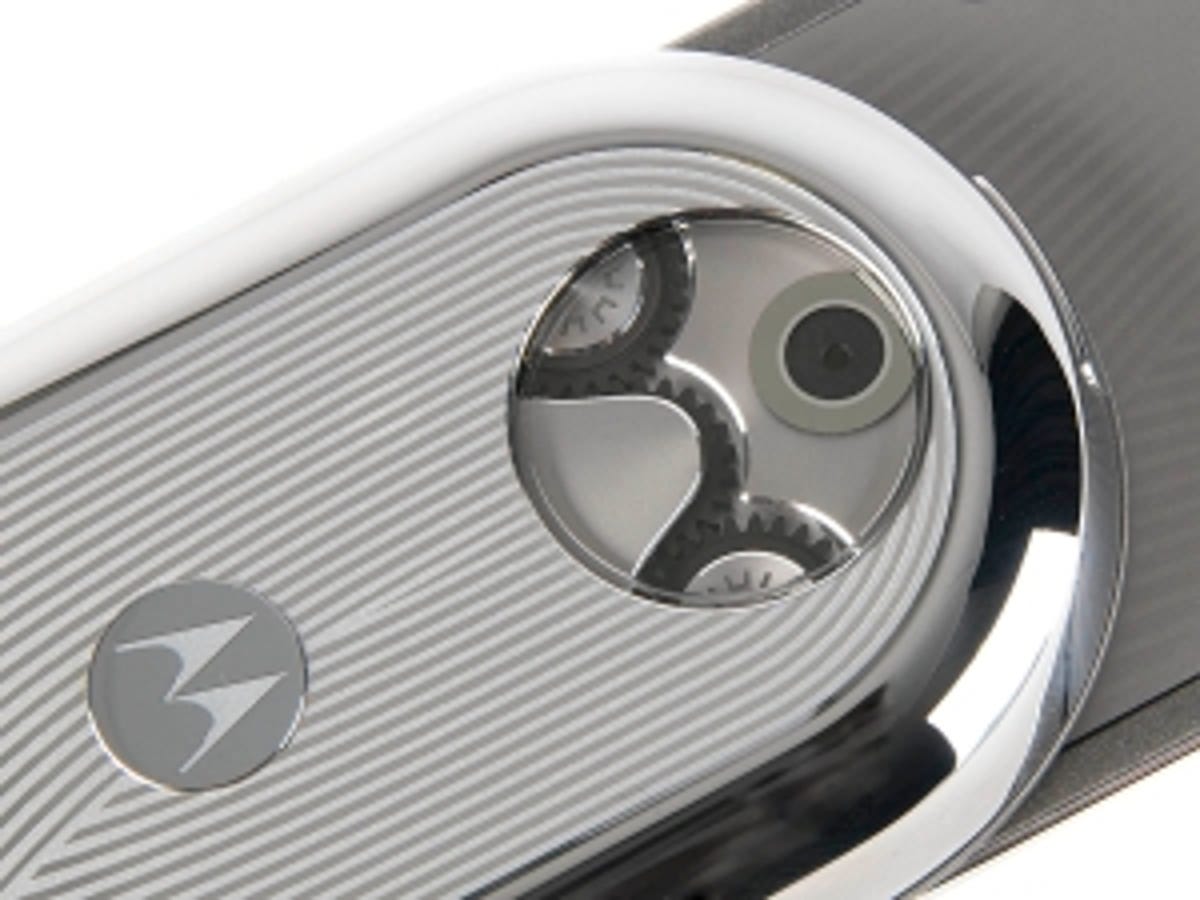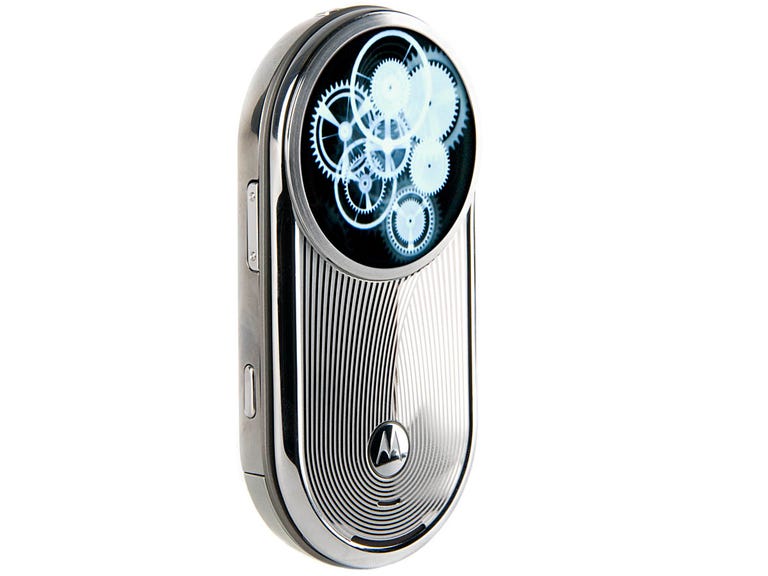 Why You Can Trust CNET
Why You Can Trust CNET Motorola Aura review: Motorola Aura
The Aura feels like luxury from the moment you crack open its swanky leather box. It's weighty stainless-steel body and stunning round screen will impress the crowd, but it's light on advanced features. For those seeking a luxury phone for making calls and not much else, the Aura could be your hand candy
Like Derek Zoolander, the Motorola Aura knows there's more to life than being really, really, ridiculously good looking. But it's not sure exactly what.
The Good
The Bad
The Bottom Line
The Aura is drop-dead gorgeous, thanks mostly to its stunning 16-million-colour screen, but, like many fashion phones, it falls down on features. With an equally stunning price tag of around £1,200 SIM-free, it's got its work cut out to impress us.
Pretty but dumb
The Aura looks unique and impressive. Every time we whipped it out, we heard a chorus of 'oohs' and 'aahs'. When faced with the Aura's
loveliness, even the most curmudgeonly of cynics melted like they were looking at a baby kitten, having previously raised an eyebrow in doubt when they heard about 'the world's first circular screen'.
Part of the Aura's appeal lies in its hefty, 15mm-thick, etched stainless-steel body and rotating cover with exposed geared mechanism. But most of its charm is down to the screen, which is clear and amazingly vibrant, thanks to its 16 million colours, 300dpi resolution and a 62-carat sapphire-crystal lens.
But a round screen has its drawbacks. In fact, it made us realise why every other screen is square. For example, when we were taking photos on the Aura's 2-megapixel camera, the corners of the image weren't visible, which made it difficult for us to frame our snaps. After we took a photo, the Aura showed the whole rectangular image, wasting a great deal of screen real estate.
We had a similar problem when surfing the Web. Web pages are designed for rectangular screens, so the Aura letterboxes the top and bottom of its display and cuts off the corners of the page to show a wide image with rounded sides. It works, but it reminded us that the round screen is a gimmick that's all about looks rather than functionality. The Aura's okay for looking something up on Google in an emergency, for example, but not for any serious surfing.

But maybe we're being shape-ist bigots -- is it the Aura's fault that it's a round peg in a square world? Yes, because, even within its own user interface, which should be round-screen-friendly, there are problems.
The main menu consists of a series of icons arranged in a circle. It would probably be a pleasure to navigate the icons using a round wheel like that of an iPod. But the Aura sports a four-way navigation button, so moving around the circle requires multiple presses of the left or right directional buttons. We were frustrated when we wanted to manoeuvre to options on the opposite side of the circle because they take so long to get to.
In fact, we found the Aura's user interface click-happy throughout. For example, it took 13 steps to change the wallpaper -- something we bet we'd be doing often so we could enjoy that luscious screen. And that's if we wanted to use one of the pre-made round wallpapers -- to browse to our own photos required another four steps.
We also found the interface inconsistent and confusing. For example, when selecting a new wallpaper image, the select option's on the right function key. When choosing an option from the shortcut menu on the home screen, the select option's on the left.
Shrunken heads
The Aura sports a 2-megapixelcamera, which takes bright but slightly fuzzy snaps in good light. But there's no
flash or LED photo light, so shots in low light are noisy and blurry. But we were pleased
to find a short lag of only a fraction of a second between pressing the shutter
and taking a photo.
The Aura also shoots video, but the results were dark and dingy when we filmed indoors. We were also disappointed with the playback: videos are played in the centre of the screen in a tiny 21 by 16mm square.
Even the full-screen option doesn't expand the video to fill the round screen, although it does what it says on the tin in the case of photos. The Aura's screen is its crowning glory, and we think it should exploit that by showing all media in a big and round format by default. Otherwise, we end up looking at unspectacular photos and video on a tiny screen area -- hardly a luxury experience.
Getting sleepy
The brightness and clarity of the Aura's screen drains the battery. The Aura tries to address this by dropping into screen-saver mode within a few seconds.
But, with constant use, we found the battery life to be far below Motorola's estimate
of 7.3 hours of talk time and up to 400 hours of standby
time. A couple of hours of ogling the screen and a night on
standby drained the battery completely.
On the other hand, the Aura's clock function, shown when the handset is closed, shows off the screen beautifully. In fact, the clock is one of the phone's best features, and almost made us wish the Aura was a watch rather than a mobile. Motorola has obviously recognised the clock's importance, adding a shortcut from the home screen so that you can switch quickly between the five different styles available.
Sound effort
The Aura's media player supports several formats, including AAC, MP3, WAV and WMA. We found the sound acceptable when compared to that of the SanDisk
Sansa Fuze through some beautiful Audio
Technica headphones, but we had to
test using the handset's included headphones due to its proprietary socket.
The Aura's output lacks the depth and resonance of the dedicated MP3
player, but we felt it would be fine for casual listening.
We used the Motorola Phone Tools software to transfer audio files to the Aura's 2GB of on-board memory via USB. The software looks amateurish but is easy to use, and we had no trouble setting it up or transferring files. But be warned: Motorola has no love for the Mac. You'll need Windows XP, 2000 or Vista to sync the Aura.
Conclusion
Motorola has joined Vertu and luxury-watch makers TAG Heuer
and Ulysse
Nardin in the rush to serve the few users who are crying out for more expensive, blinging phones. Like its rival offerings, the Aura is
primarily aimed at blinding us with its beauty and price tag, rather than its features.
It's not good for much besides making calls, but its stunning screen, stainless-steel body and rotating cover are certainly glamorous. If you have deep pockets and you're not worried about advanced features like surfing the Web, the Aura could be for you.
Edited by Charles Kloet
